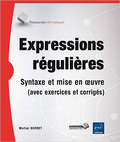Unix |
Unix v6 |
|
 |
ls(1) |
 |
ls list contents of directory [ ] name ... For each
directory argument, lists the contents of the directory; for
each file argument, repeats its name and any other
information requested. The output is sorted alphabetically
by default. When no argument is given, the current directory
is listed. When several arguments are given, the arguments
are first sorted appropriately, but file arguments appear
before directories and their contents. There are several
options: l list in long format, giving mode, number
of links, owner, size in bytes, and time of last
modification for each file. (See below.) If the file is a
special file the size field will instead contain the major
and minor device numbers. t sort by time modified
(latest first) instead of by name, as is normal a
list all entries; usually those beginning with
‘.’ are suppressed s give size in
blocks for each entry d if argument is a directory,
list only its name, not its contents (mostly used with to
get status on directory) r reverse the order of sort
to get reverse alphabetic or oldest first as appropriate
u use time of last access instead of last
modification for sorting (t) or printing (l)
i print i-number in first column of the report for
each file listed f force each argument to be
interpreted as a directory and list the name found in each
slot. This option turns off and and turns on the order is
the order in which entries appear in the directory.
−g Give group ID instead of owner ID in long
listing. The mode printed under the option contains 11
characters which are interpreted as follows: the first
character is d if the entry is a directory; b
if the entry is a block-type special file; c if the
entry is a character-type special file; if the entry is a
plain file. The next 9 characters are interpreted as three
sets of three bits each. The first set refers to owner
permissions; the next to permissions to others in the same
user-group; and the last to all others. Within each set the
three characters indicate permission respectively to read,
to write, or to execute the file as a program. For a
directory, ‘execute’ permission is interpreted
to mean permission to search the directory for a specified
file. The permissions are indicated as follows: r if
the file is readable w if the file is writable
x if the file is executable if the indicated
permission is not granted The group-execute permission
character is given as if the file has set-group-ID mode;
likewise the user-execute permission character is given as
if the file has set-user-ID mode. The last character of the
mode is normally blank but is printed as
‘‘t’’ if the 1000 bit of the mode is
on. See for the current meaning of this mode. /etc/passwd to
get user ID’s for ls l.
 |
ls(1) |
 |





